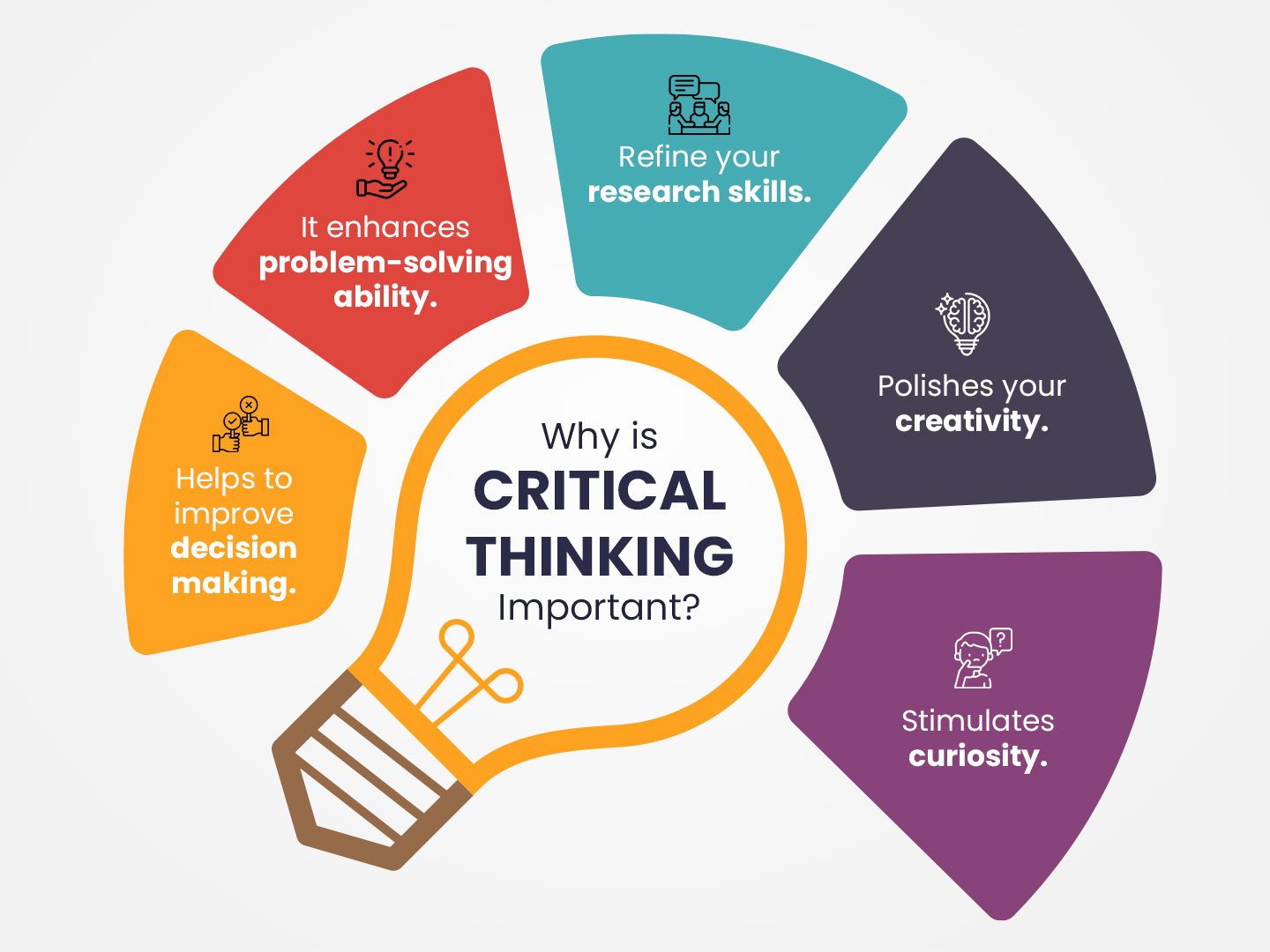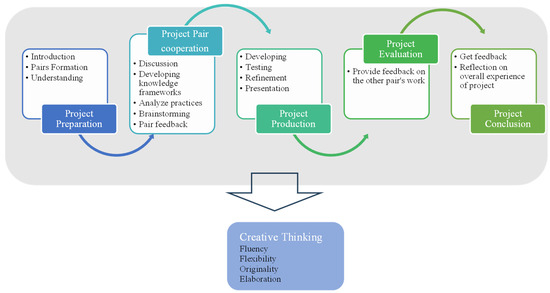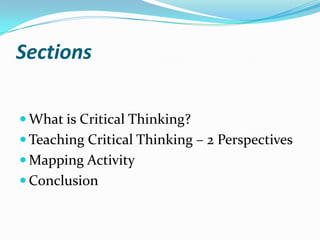Balancing Act: Nurturing Critical and Creative Thinking Skills
Understanding Critical Thinking and Creative Thinking
Critical thinking involves analyzing and evaluating information in a logical and objective manner. It requires the ability to think critically, ask relevant questions, and consider different perspectives. This skill is crucial for making informed decisions, problem-solving, and understanding complex issues.
Creative thinking, on the other hand, involves generating new ideas, solutions, and possibilities. It involves thinking outside the box, exploring different options, and embracing innovation. Creative thinking nurtures imagination, curiosity, and flexibility, allowing individuals to approach challenges with a fresh perspective.
Balancing critical thinking and creative thinking is important because they complement each other. Critical thinking helps evaluate and refine creative ideas, while creative thinking provides innovative solutions to critical thinking challenges. When combined, these skills enable individuals to solve problems effectively, make informed decisions, and adapt to an ever-changing world.
Both critical thinking and creative thinking are essential in education and professional development, as they foster intellectual growth and promote a culture of innovation and creativity. By nurturing both skills, individuals can become well-rounded thinkers capable of approaching various situations with a balanced and open-minded mindset.
Critical Thinking and its importance

Critical thinking plays a vital role in education and personal development as it equips individuals with the ability to analyze and evaluate information critically. By asking relevant questions, considering different perspectives, and examining evidence objectively, individuals can make informed decisions and understand complex issues more effectively. Critical thinking fosters logical reasoning, problem-solving skills, and the ability to assess the validity and reliability of information. It helps individuals think independently, challenge assumptions, and avoid biases. Critical thinking is also essential for professional success, as it enhances decision-making abilities, encourages innovative problem-solving, and promotes a deep understanding of various subjects. By nurturing critical thinking skills, individuals can navigate through an information-rich world and make sound judgments based on evidence and reasoning.
Creative Thinking and its benefits

Creative thinking is the ability to generate new and innovative ideas and solutions. It involves thinking outside the box, exploring different perspectives, and embracing unconventional approaches. Creative thinking is highly beneficial in various areas of life. It fosters flexibility and adaptability, enabling individuals to find alternative solutions to challenges. It encourages problem-solving skills and encourages individuals to explore multiple possibilities. Creativity also promotes self-expression and enhances communication skills. It boosts confidence and self-esteem by allowing individuals to showcase their unique ideas and perspectives. Furthermore, creative thinking stimulates imagination and promotes a sense of curiosity and exploration. It fuels innovation and drives progress in various fields, from technology and art to business and education.
Importance of Balancing Critical and Creative Thinking Skills

Balancing critical and creative thinking skills is crucial for individuals to thrive in today's complex and dynamic world. While critical thinking allows individuals to analyze information, evaluate arguments, and make sound judgments, creative thinking enables them to generate innovative ideas, explore new possibilities, and think outside the box.
By cultivating both critical and creative thinking skills, individuals can achieve a balanced approach to problem-solving. They can gather and analyze relevant information critically, while also using their creative abilities to come up with alternative solutions and approaches. This balance allows for more comprehensive and effective problem-solving outcomes.
Moreover, balancing critical and creative thinking skills promotes a well-rounded mindset that embraces both logical analysis and imaginative thinking. It helps individuals adapt to change, navigate uncertainties, and find innovative solutions to complex challenges. By integrating critical and creative thinking, individuals can approach decision-making with a holistic perspective and achieve optimal results.
How critical and creative thinking complement each other

Critical thinking and creative thinking are two valuable cognitive skills that, when combined, can enhance problem-solving and decision-making processes. Critical thinking involves analyzing information, evaluating arguments, and making logical judgments based on evidence. On the other hand, creative thinking involves generating innovative ideas, exploring new possibilities, and thinking outside the box.
When critical and creative thinking are combined, they create a powerful synergy. Critical thinking helps evaluate the viability and effectiveness of creative ideas, while creative thinking provides alternative perspectives and solutions to problems. Critical thinking ensures that creative ideas are grounded in reality and feasibility, while creative thinking brings fresh and unique insights to critical analysis. By complementing each other, critical and creative thinking lead to well-rounded and holistic problem-solving approaches, resulting in optimal outcomes.
By cultivating both critical and creative thinking skills, individuals can achieve a balanced approach that maximizes their ability to tackle complex challenges and make informed decisions.
The impact of balanced thinking skills in problem-solving
Balanced thinking skills, which combine critical and creative thinking, have a significant impact on problem-solving. When faced with complex challenges, individuals who possess both critical and creative thinking abilities are better equipped to evaluate different perspectives, analyze information, and generate innovative solutions. By harnessing critical thinking, they can analyze the problem objectively, consider multiple factors, and identify potential limitations or constraints. On the other hand, creative thinking enables individuals to think outside the box, explore unconventional possibilities, and come up with fresh approaches to problem-solving. The synergy between critical and creative thinking allows individuals to approach problems holistically, considering both practicality and innovation, leading to more effective and well-rounded solutions. This balance ultimately improves decision-making and problem-solving outcomes.
Strategies to Develop Critical Thinking Skills
Strategies to Develop Critical Thinking Skills:
- Questioning Assumptions: Encourage individuals to question assumptions and seek evidence to support or challenge them. This helps develop a skeptical and analytical mindset.
- Analyzing Arguments: Teach individuals how to critically evaluate arguments by identifying logical fallacies, biases, and inconsistencies. This enhances their ability to assess the validity and reliability of information.
- Seeking Multiple Perspectives: Emphasize the importance of considering different viewpoints and understanding diverse perspectives. This helps individuals broaden their thinking and avoid cognitive biases.
- Problem-Solving Exercises: Provide opportunities for individuals to engage in problem-solving activities that require them to analyze information, evaluate options, and make informed decisions.
- Reflective Thinking: Encourage individuals to reflect upon their thinking processes and identify areas for improvement. This fosters metacognition, allowing individuals to become more aware of their own biases and assumptions.
By implementing these strategies, individuals can enhance their critical thinking skills, enabling them to approach problems more effectively and make informed decisions based on sound reasoning and evidence.
Effective ways to enhance critical thinking abilities

There are several effective ways to enhance critical thinking abilities. One approach is to practice questioning assumptions. Encourage individuals to challenge existing beliefs and seek evidence to support or challenge them. This helps develop a skeptical and analytical mindset. Another strategy is to analyze arguments. Teach individuals how to critically evaluate arguments by identifying logical fallacies, biases, and inconsistencies. This enhances their ability to assess the validity and reliability of information. Seeking multiple perspectives is also crucial. Emphasize the importance of considering different viewpoints and understanding diverse perspectives. This helps individuals broaden their thinking and avoid cognitive biases. Engaging in problem-solving exercises and reflective thinking are also helpful in developing critical thinking skills. By implementing these strategies, individuals can enhance their critical thinking skills and make informed decisions based on sound reasoning and evidence.
Practical exercises to sharpen critical thinking skills

Practical exercises are an effective way to sharpen critical thinking skills. One exercise is the Socratic method, where individuals engage in thoughtful questioning and reasoned dialogue to evaluate assumptions and generate logical conclusions. Another exercise is analysis of case studies, where individuals analyze real-world scenarios, identify key issues, and propose informed solutions. Problem-solving activities, such as puzzles and brain teasers, also help develop critical thinking by requiring individuals to think creatively, analyze information, and make informed decisions. Additionally, encouraging individuals to engage in debates and discussions, where they can analyze different perspectives and present well-reasoned arguments, strengthens their critical thinking abilities. By consistently engaging in these practical exercises, individuals can enhance their critical thinking skills and become more effective problem-solvers.
Cultivating Creative Thinking Skills
Cultivating creative thinking skills is essential for individuals seeking to enhance their problem-solving abilities and foster innovation. To cultivate creativity, individuals can employ various techniques. One effective approach is to engage in brainstorming sessions, where individuals generate a wide range of ideas without judgment or criticism. This helps to expand thinking and explore new possibilities. Another technique is to encourage curiosity and exploration, allowing individuals to explore new perspectives and ideas. Additionally, practicing divergent thinking, which involves generating multiple solutions to a problem, can help nurture creativity. Engaging in creative activities such as painting, writing, or playing a musical instrument also stimulates the creative mind. By regularly practicing these techniques and embracing a mindset of curiosity and exploration, individuals can cultivate their creative thinking skills and unleash their innovative potential.
Techniques to foster creativity
There are several techniques that can be employed to foster creativity. One effective approach is to engage in brainstorming sessions, where individuals generate a wide range of ideas without judgment or criticism. This helps to expand thinking and explore new possibilities. Another technique is to encourage curiosity and exploration, allowing individuals to explore new perspectives and ideas. Additionally, practicing divergent thinking, which involves generating multiple solutions to a problem, can help nurture creativity. Engaging in creative activities such as painting, writing, or playing a musical instrument also stimulates the creative mind. By regularly practicing these techniques and embracing a mindset of curiosity and exploration, individuals can cultivate their creative thinking skills and unleash their innovative potential.
Encouraging a creative mindset in everyday life

Encouraging a creative mindset in everyday life involves adopting certain practices and habits that stimulate innovative thinking. One way to do this is by embracing curiosity and approaching situations with an open mind. This involves asking questions, exploring multiple perspectives, and seeking out new experiences. Engaging in activities such as painting, writing, or playing a musical instrument can also help to foster creativity. Creating a conducive environment by surrounding oneself with inspiration, such as art, music, or books, can also stimulate creative thinking. Taking regular breaks and stepping away from routine tasks allows for mental rejuvenation and fresh ideas. By incorporating these practices into daily life, individuals can cultivate a creative mindset and unlock their creative potential.
Achieving a Balance Between Critical and Creative Thinking

Achieving a balance between critical and creative thinking is essential for optimal problem-solving and decision-making. Integrating both thinking skills allows individuals to approach challenges from multiple angles, considering both logical and innovative solutions. By combining critical analysis with creative exploration, individuals can generate new ideas while also evaluating their feasibility and effectiveness. To maintain a balance, it is crucial to keep an open mind and be willing to challenge assumptions and think outside the box. Recognizing the value of both critical and creative thinking enables individuals to make well-informed decisions that are also innovative and imaginative. By embracing this balance, individuals can unlock their full potential and thrive in education and creativity.
Integrating critical and creative thinking in decision-making
Integrating critical and creative thinking in decision-making is essential for making well-informed and innovative choices. Critical thinking helps individuals analyze and evaluate information, considering different perspectives and potential outcomes. This analytical approach allows for a thorough assessment of the pros and cons, risks and benefits. On the other hand, creative thinking brings in fresh insights and alternative solutions that may not have been initially considered. By integrating these two thinking skills, individuals can explore all possibilities, challenge assumptions, and develop creative, yet practical, solutions. This integration enables decision-makers to make informed choices that are both grounded in logic and open to imaginative possibilities. Ultimately, balancing critical and creative thinking in decision-making leads to optimal outcomes that are both innovative and effective.
Maintaining a balanced approach for optimal results

Maintaining a balanced approach that integrates critical and creative thinking is crucial for achieving optimal results in decision-making. By incorporating both critical and creative thinking skills, individuals can analyze information, consider different perspectives, and evaluate potential outcomes. This rigorous evaluation helps in making well-informed choices that are grounded in logic and supported by creative insights. Moreover, maintaining a balanced approach encourages individuals to challenge assumptions, explore alternative solutions, and think outside the box. This combination of critical and creative thinking leads to innovative and effective decision-making that takes into account all possibilities while considering the potential risks and benefits. Ultimately, by nurturing both critical and creative thinking skills, individuals can maximize their problem-solving capabilities and achieve the best possible outcomes.
Conclusion

In conclusion, nurturing both critical and creative thinking skills is essential for individuals to excel in problem-solving and decision-making. Critical thinking allows for logical analysis and evaluation of information, while creative thinking encourages exploring innovative and alternative solutions. By maintaining a balanced approach that integrates these two thinking styles, individuals can maximize their problem-solving capabilities and achieve optimal outcomes. This balanced approach enables individuals to consider different perspectives, challenge assumptions, and think outside the box. Moreover, it fosters a mindset that combines analytical skills with creative insights, leading to innovative and effective decision-making. To continue growing in these skills, individuals can engage in practical exercises, cultivate a creative mindset, and strive for ongoing development in critical and creative thinking.
The significance of nurturing both critical and creative thinking skills
Nurturing both critical and creative thinking skills is of utmost importance in today's rapidly changing world. Critical thinking allows individuals to analyze information objectively, question assumptions, and make informed decisions. It promotes logical reasoning, problem-solving, and effective communication. On the other hand, creative thinking encourages individuals to think outside the box, generate innovative ideas, and find alternative solutions to problems. It fosters imagination, flexibility, and adaptability. By nurturing both these thinking skills, individuals can become well-rounded problem solvers and decision makers. They can approach challenges with a balanced perspective, considering different angles and exploring creative possibilities. This enhances their problem-solving capabilities and allows for more successful outcomes in various aspects of life, including education, career, and personal growth.
Tips for continued growth in critical and creative thinking
To continue nurturing critical and creative thinking skills, individuals can follow these tips:
- Read widely: Engage with a variety of topics and perspectives to broaden your knowledge and develop critical thinking skills.
- Practice questioning assumptions: Challenge your own and others' beliefs to foster critical thinking and develop a more nuanced understanding of the world.
- Seek out diverse experiences: Expose yourself to new environments, cultures, and ideas to stimulate creative thinking and encourage innovative problem-solving.
- Embrace curiosity: Stay curious and ask questions to explore different possibilities and encourage both critical and creative thinking.
- Practice reflection: Take time to reflect on your thoughts, actions, and decisions, evaluating them critically and brainstorming creative alternatives.
- Collaborate with others: Engage in team projects or discussions to benefit from diverse perspectives and stimulate your critical and creative thinking skills.
- Embrace failure: View failures as learning opportunities, allowing you to develop resilience and think creatively to overcome obstacles.
By consistently applying these tips, individuals can continue to enhance both their critical and creative thinking skills, enabling them to thrive in an ever-changing world.
